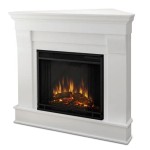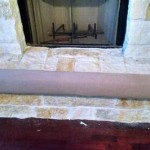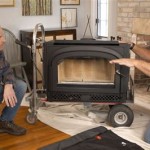What Type of Tile Is Best for Fireplace Hearth
The fireplace hearth serves as a crucial element in both the aesthetic and functional design of a fireplace. It provides a non-combustible surface that protects the surrounding flooring from sparks, embers, and radiant heat emitted by the fire. Choosing the right tile for a fireplace hearth requires careful consideration of several factors, including heat resistance, durability, aesthetic appeal, and maintenance requirements. Different types of tiles possess varying properties that make them suitable or unsuitable for this demanding application. This article will explore several popular tile options and their characteristics to assist in making an informed decision.
Understanding the Demands Placed on Hearth Tiles
Before delving into specific tile types, it's essential to understand the challenges a fireplace hearth presents. The primary concern is heat. The hearth must endure high temperatures and rapid temperature fluctuations without cracking, warping, or discoloring. Some materials are simply not capable of withstanding this thermal stress. For instance, certain types of plastic or resin-based tiles would melt or emit harmful fumes. Porosity is another important factor. A highly porous tile will absorb soot, ash, and spills, making it difficult to clean and potentially leading to staining. Durability is also paramount, as the hearth is a high-traffic area that may be subjected to weight from fireplace tools, firewood, and even foot traffic. Finally, the tile must complement the overall design of the room and the fireplace surround.
Popular Tile Choices for Fireplace Hearths
Several tile options are commonly used for fireplace hearths, each with its own set of advantages and disadvantages. Some of the most prevalent choices include ceramic tile, porcelain tile, natural stone tiles (such as granite, slate, and marble), and, occasionally, glass tiles.
Ceramic Tile: Ceramic tile is a widely available and relatively affordable option. It is manufactured by baking clay at high temperatures. While ceramic tile is generally heat-resistant, its porosity and lower density compared to porcelain can make it more susceptible to staining and cracking under extreme thermal stress. The key to using ceramic tile successfully on a hearth is to select a high-quality tile with a low water absorption rate. Glazed ceramic tiles offer better stain resistance than unglazed options. However, the glaze itself can be susceptible to cracking if exposed to very high temperatures or sudden temperature changes. Large temperature fluctuations can cause the glaze to expand and contract at a different rate than the underlying ceramic, leading to surface cracks, also known as crazing. Therefore, while ceramic tile can be used, it is not always the most durable or heat-resistant choice for a high-use fireplace.
Porcelain Tile: Porcelain tile is a denser and more durable type of ceramic tile, manufactured from finer clay and fired at higher temperatures. This results in a tile with significantly lower water absorption rates, making it highly resistant to staining and cracking. Porcelain is also more resistant to abrasion and impact than standard ceramic tile, making it a good choice for high-traffic areas. Due to its density and low porosity, porcelain tile is an excellent option for a fireplace hearth, particularly in homes where the fireplace is used frequently. It is available in a wide variety of colors, patterns, and textures, including options that mimic the look of natural stone. The durability and resistance to heat make it a superior choice to ceramic, although it typically comes at a slightly higher cost.
Natural Stone Tiles: Natural stone tiles, such as granite, slate, and marble, offer a unique and aesthetically pleasing option for fireplace hearths. Each type of stone possesses distinct characteristics that influence its suitability for this application.
Granite: Granite is an igneous rock known for its exceptional hardness and durability. It is highly resistant to heat, scratches, and stains, making it an excellent choice for a fireplace hearth. Granite is also relatively non-porous, which minimizes the risk of staining from soot and ash. It is available in a wide range of colors and patterns, allowing for a variety of design options. The inherent strength and heat resistance of granite make it a popular choice for high-use fireplaces.
Slate: Slate is a metamorphic rock known for its distinctive layered appearance and natural cleft texture. It is relatively heat-resistant and durable, although it is slightly more porous than granite. Slate may require sealing to prevent staining, especially if it has a honed or unsealed finish. The natural variations in color and texture of slate can add a rustic and unique look to a fireplace hearth. While it is a good option, regular sealing is essential to maintain its appearance and prevent stains from setting permanently.
Marble: Marble is a metamorphic rock prized for its elegant veining and polished surface. While visually appealing, marble is relatively soft and porous compared to granite and slate. It is susceptible to scratching, staining, and etching from acidic substances. Marble is also more sensitive to heat and can crack or discolor if exposed to extreme temperatures. Although it can technically be used, marble is generally not the best choice for a fireplace hearth that will be subjected to frequent use due to its higher maintenance requirements and susceptibility to damage.
Glass Tiles: While less common than other options, glass tiles can be used to create a unique and modern look for a fireplace hearth. However, not all glass tiles are suitable for this application. Only tempered glass tiles, which are specifically designed to withstand high temperatures, should be used. Standard glass tiles may shatter or crack under thermal stress. Tempered glass tiles are non-porous and easy to clean, but they may be more expensive than other tile options. The aesthetic appeal of glass tiles – their ability to reflect light and add a clean, contemporary feel – is their primary advantage. However, the selection of tempered options is limited, and the cost can be a deterrent for some homeowners.
Key Considerations for Selecting Hearth Tiles
Beyond the specific tile types, several general considerations should guide the selection process:
Heat Resistance: This is the most critical factor. The tile must be able to withstand the temperatures generated by the fireplace without cracking, warping, or discoloring. Look for tiles with a high thermal shock resistance rating. Information about a tile's heat resistance can usually be found on the manufacturer's specifications or material safety data sheet (MSDS).
Porosity and Stain Resistance: Choose tiles with low water absorption rates to minimize the risk of staining. Porcelain and glazed ceramic tiles are generally good choices. Natural stone tiles may require sealing to prevent staining. The ease of cleaning should also be considered, as hearth tiles will inevitably require regular cleaning to remove soot and ash.
Durability and Traffic: The hearth is a high-traffic area, so choose tiles that are resistant to scratching, chipping, and impact. Porcelain and granite are excellent choices for high-traffic areas. Consider the thickness of the tile, as thicker tiles are generally more durable. Also, think about the potential for dropped fireplace tools or firewood, which could damage less durable tile options.
Installation and Maintenance
Proper installation is crucial to ensure the longevity and performance of any hearth tile. The subfloor should be level, clean, and structurally sound. Use a heat-resistant thin-set mortar specifically designed for fireplace applications. Grout should also be heat-resistant and sealed to prevent staining. Regular cleaning is essential to maintain the appearance of the hearth. Use a mild detergent and avoid abrasive cleaners that can scratch or damage the tile. Natural stone tiles may require periodic resealing to maintain their stain resistance.
In conclusion, selecting the best type of tile for a fireplace hearth involves balancing aesthetic preferences with practical considerations such as heat resistance, durability, and maintenance. Porcelain tile and granite are often considered the top choices due to their excellent heat resistance and durability. Other options, such as slate and certain types of ceramic tile, can also be suitable if properly selected and maintained. Careful planning and attention to detail during the selection and installation process will ensure a beautiful and functional fireplace hearth for years to come.

What Are The Best Tiles For A Fireplace Rotherham Centre

Choosing The Best Tiles For Your Fireplace

Fireplace Tiles The Tile Home Guide

Fireplace Tiles Complete Guide On What Can Be Used And Where

Remodeling A Fireplace With Tile

Fireplace Tiles Classique Floors Tile Portland Or
/102661017-6a23c040b71843379188b96b21ac1a08.jpg?strip=all)
How To Tile A Fireplace

Buy The Best Types Of Fireplace Tile At A Arad Branding

Best Fireplace Tile Ideas For Your Home
:strip_icc()/101343186-8909e34a95d74e0087ce39e27577ca41.jpg?strip=all)
How To Tile A Fireplace Hearth
Related Posts








